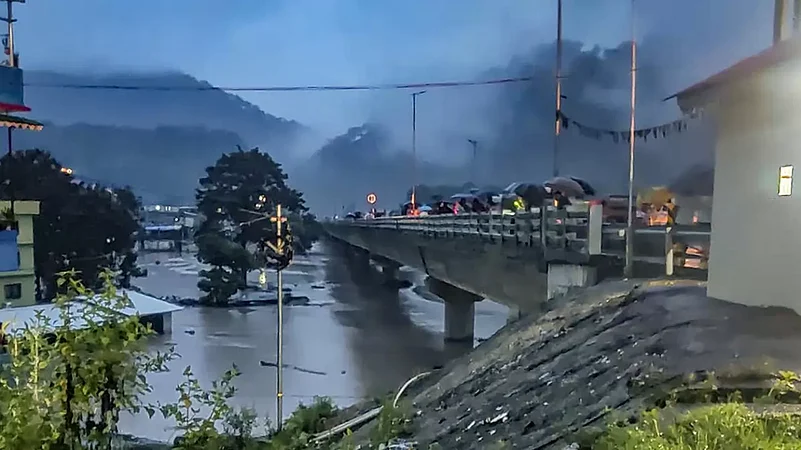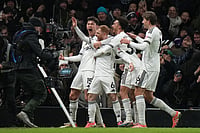After Himachal Pradesh and Uttarakhand, the tiny hill state of Sikkim faces the brunt of human-inflicted global warming and flood plains encroachment. A cloudburst over Lhonak Lake and the melting of the glacier triggered a Glacial Lake Outburst Flood (GLOF) that has so far claimed 19 lives and left over 100 missing. Although rescue operations are underway through slushy earth and fast-flowing water in the Teesta River, the situation is critical in the Himalayan state.
Waters from the overflowing Teesta River flowed downhill and reached Sikkim's biggest hydropower project - the Teesta-III project in Chungthang - located about 5,000 feet above sea level. The water, with all the debris it picked up along the way, rammed into the dam, causing parts of it to give way. Following this, on Friday, Sikkim Chief Minister Prem Singh Tamang blamed "inferior construction" by the previous state government for the destruction of the Chungthang Dam.
In the case of Sikkim, one condition led to another causing the glacial lake to overflow. Sikkim is experiencing one of the rainiest Octobers in the last two decades. While October rains didn't use to be so intense earlier, the current situation is worrying given the changing climatic conditions due to global warming. According to figures reported by Hindustan Times, long-term data suggests that October has indeed become rainier over time.Such intense rain, following the cloudburst on October 4, led to GLOF, which usually results in causing more destruction and damage than rain. A GLOF is a flood that happens due to a moraine bursting and leading to a heavy discharge of water in the lower plains. Moraine is a dam caused by debris from a glacier. Lhonak is a glacial lake located 17,000 meters above sea level in the upper terrains. Although such floods are rare in nature, several reports suggest that the rate of occurrence of the same is only increasing given the rising temperatures. Not to forget, the global average temperature of the summers in the northern hemisphere has been at the record highest this year.Adding to the woes of increasing global temperature, the alleged blatant disregard by authorities to permit new settlements in flood-prone areas in Sikkim led to the horrifying events witnessed this week. A paper published in Nature underlines that 13 per cent of Sikkim’s new habitations have come up in areas that have been classified as high flood-risk zones.All these factors bring us to the age-old question of how many of these situations should be deemed ‘natural disasters’ or how many should be categorised as man-made tragedies. In a previous report, ‘There Are No Natural Disasters’, Outlook explained how disasters on the scale we see are human-made and based on poor planning and mindless construction.
As the death toll rises with consecutive governments up on their feet once again to tread blame games, Outlook looks at its archive to highlight that no hazards are as ‘natural’ as we would like to call them. They are a chain reaction of human-inflicted climate change, poor planning, and mindless constructions.

























